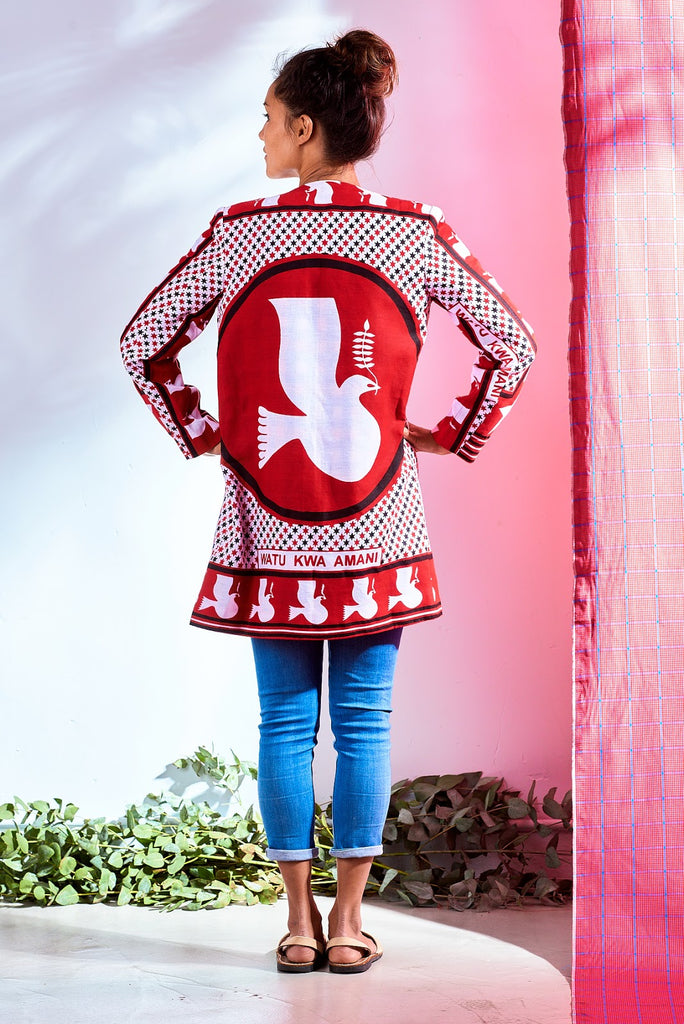
RETURNING TO WHERE IT ALL BEGAN
Dear tribe,
If you asked me what my favourite Maisha collection is, my answer would be: all of them! It’s hard to choose favourites when every fabric printed has its own story to tell.

Swahili Summer, however, is a collection that I hold dear to my heart. It was a pivotal collection when my heart said ‘YES!’ completely; a collection that managed to weave my African heritage and the Maisha story together in ways I can’t put into words. One of my most vivid memories growing up is travelling to the Maasai Mara National Reserve and watching the Maasai people live alongside nature just as our ancestors used to. It was always an eye-opening experience for someone who was coming from a city. It taught me to respect lives that were vastly different from mine––and to even embrace it as part of my own African heritage, one that I will always be proud of.
Looking back on the fabric and symbols of Swahili Summer, I realised many of you may not know how the collection came about! So today I’ll share a bit more about the Maasai people, and how this African tribe and their clothing shaped an important part of Maisha today.

The Maasai are strong, adaptable people.
The Maasai are a semi-nomadic tribe that has lived around the African Great Lakes for centuries. Rearing cattle is their livelihood, but with dwindling territories and societal changes, the Maasai have undergone shifts in their own culture. Many have adopted farming as an additional source of income, and symbolic rituals like lion-killing are no longer practiced. In spite of this, the Maasai are set in living life as they always have been. Did you know? There are now 2 million Maasai people in Kenya and Tanzania!

The Shuka and Kanga: fabrics with feeling.
One of the most distinctive aspects of Maasai culture is the shuka: a woven fabric worn by Maasai menfolk. The bright red cloth is often seen draped on formidable Maasai warriors––however, the shuka can also be striped, checkered and in varying shades of blue and orange. When I watched these men stride into the Kenyan plains, deeply self-assured in their red shukas, I knew I wanted to capture their confidence somehow through a collection!
Another fabric––the kanga––is one more associated with the womenfolk. These are brightly printed fabrics with a border and a contrasting image in the middle. I was particularly drawn to the proverbs that are often added to the borders. And the dove is always a powerful symbol of peace.

Did you know? On the freedom dress there is a Swahili quote which says ‘WATU KWA AMANI’. That means ‘PEOPLE OF PEACE’ in English.

The Maasai are one with nature.
In our modern lifestyle, it’s hard to imagine life under the sun and stars, with all the elements against you. I think that is what fascinates me about the Maasai way of life. They are dignified, respectful of the land they live on and so proud of their heritage and identity. Sadly, modern ownership of land has caused a rapid decline in the Maasai way of life: grazing land previously managed collectively is now shrinking due to private ownership and tourism. Yet they continue to adapt to new ways of living with nature. It seems to me that, to the Maasai, life is not part of nature––life is nature. It is a thought I hold onto as it reminds me that all my actions have an impact on the world we live in.
